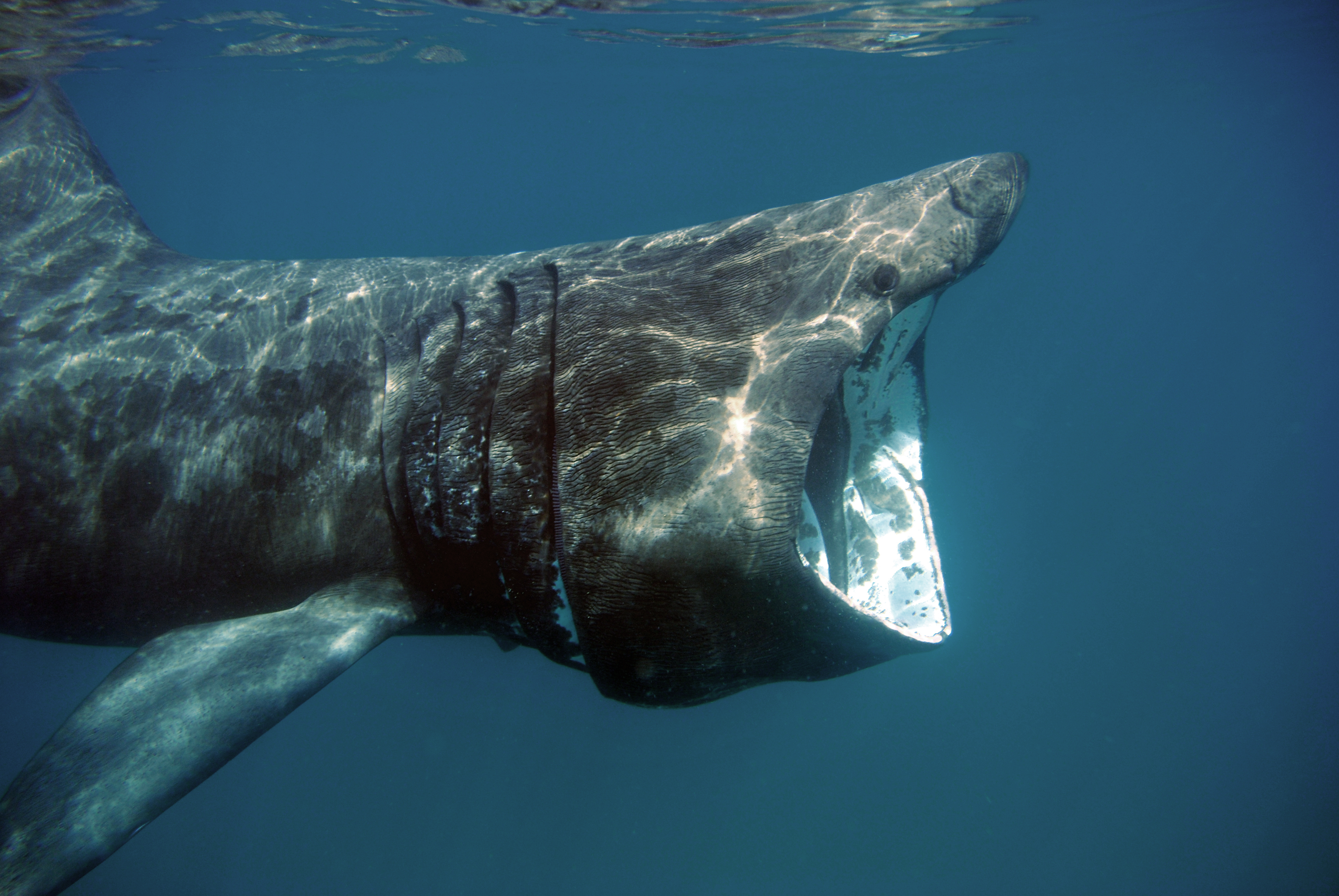By Kristin Walovich, Pacific Shark Research Center

Contrary to Hollywood’s portrayal of gigantic man-eating sharks, the three largest species of shark spend their time peacefully roaming the ocean's surface munching on the ocean’s smallest creatures. Basking Sharks, the second largest species of shark, cruise the seas in search of plankton, filtering up to 2,000 tons of water across its gills per hour. Reaching lengths of thirty five feet, this shark exists worldwide, yet very little is known about how they live or where they go.
To discover more information about this vulnerable species, scientists from the Pacific Shark Research Center (PSRC) and the National Marine Fisheries Service (NMFS) have begun a new type of shark hunt. Unlike the crazed and frantic scenes from the JAWS movie, this shark hunt only requires a boat, camera and telephone! The Spot a Basking Shark Project enlists the help of local sea-farers to uncover the demographics and distribution of the California Basking Shark.
Once common along the California coast, these gentle giants are now a rare sight. In the past, these social creatures were seen in schools of hundreds or thousands; however since 1993 no more than three basking sharks have been spotted together. Fishing and eradication efforts by fishermen who believed them to be ‘man-eaters’ contributed heavily to their population decline. Despite the fishery closure in the late 1950s, Basking Shark numbers have remained low, mostly due to human impacts like vessel strikes, fisheries bycatch and illegal shark fining. Based on the decline of Basking Shark numbers and lack of species information, the International Union for Conservation of Nature (IUCN) has listed this species as endangered.
If you see a Basking Shark, the PSRC and NMFS want to know! These sharks can be identified by their large size, pointed snouts, and large gill slits that encircle the head. Basking sharks have dorsal fins up to three feet tall that are visible as they slowly swim along the surface with mouths wide open catching plankton. If you see a Basking Shark, call or email the PSRC with your location, date and time of the sighting and any photos or videos. Your information helps the PSRC document and understand these majestic and peaceful creatures.
Visit the PSRC Website to report a sighting and to learn more about Basking Sharks!


